Citrus fruits include all those fruit species that belong to the genus Citrus, with their characteristic sweet and sour taste and exceptional nutritional properties. These fleshy fruits are predominantly grown in subtropical and tropical regions, although they adapt and grow in almost all regions of the world within the 40° latitude zone – in Europe this would be Spain, Italy and Greece. This wide distribution and adaptability have made them one of the fruit categories with the largest production and commercialisation on a global level.
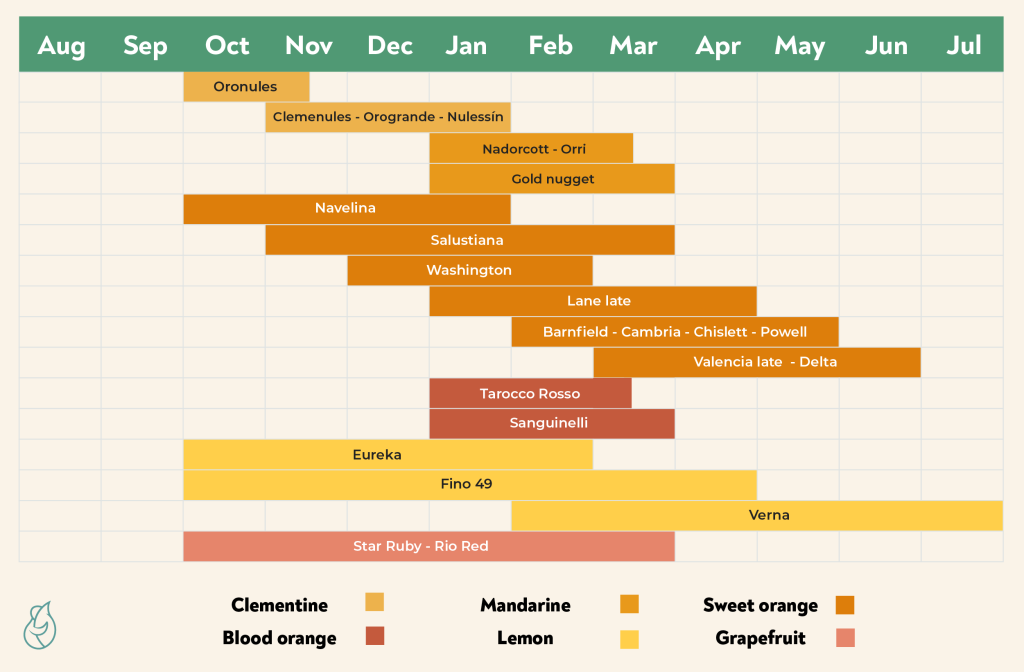
If you have doubts such as why your clementines or lemons have arrived green, or how to keep them fresh for longer, you can consult our blog post on the most frequently asked questions about organic citrus fruits.
If you want some inspiration on what to do with your citrus fruits, here are some recipes!
The Citrus “Odyssey”

The history of citrus fruits spans many cultures and eras. According to Greek myth, the gardens of the Hesperides were populated by golden apples: today we know that they really meant oranges. In ancient China, from 2200 BC, they were symbols of prosperity. On the Silk Road, their value lay in preventing scurvy.
The genus Citrus includes not only oranges, but also mandarins, lemons, limes, grapefruit and other lesser-known varieties. They all share their origin, located in Southeast Asia, specifically in the Himalayan region. Their domestication generated a complex genetic network, driving their expansion.
Limes and sour oranges are thought to have originated in eastern and northern India respectively, while lemons may be a hybrid of citron and mandarin. Sweet oranges possibly originated in southeast China and were brought to Europe by the Romans. Mandarins travelled to Japan along the Yangtze River, and grapefruits quickly established themselves in the Malay Peninsula.
While tracing their journey is challenging, genomics and biogeography provide some answers, as well as a good history lesson.
A nutritional treasure
In addition to sugars such as glucose and fructose, citrus fruits are our main source of vitamin C, especially during the winter. These values are usually higher for oranges than for mandarins, and significantly higher in the case of organically produced fruit, which can be between 15 and 30% higher depending on the variety. It is also important to know that orange juice contains only 25% of the vitamin C contained in the fruit.
However, vitamin C is not the only nutritional gem of citrus fruits. These fruits are also an excellent source of carotenoids, xanthophylls or flavonoids that not only give citrus fruits their characteristic orange or even red colour in the case of blood oranges, but also act as powerful antioxidants and precursors of vitamin A. Other nutrients in citrus fruits include folic acid, potassium, calcium and magnesium, which are essential for cardiovascular and bone health and muscle function.
In addition, each citrus species has its own nutritional peculiarities that differentiate them from the rest, for example, limes and lemons are particularly rich in citric acid and vitamin C, while grapefruits offer a good amount of vitamin A.
The endless species and varieties of citrus fruits
The popularity of modern varieties that offer higher profitability, are better adapted to market demands and environmental conditions and are more resistant to diseases and pests, eventually displaces traditional and indigenous varieties. Among the main citrus species and varieties currently available on the market, we can highlight the following:
Oranges (Citrus sinensis)
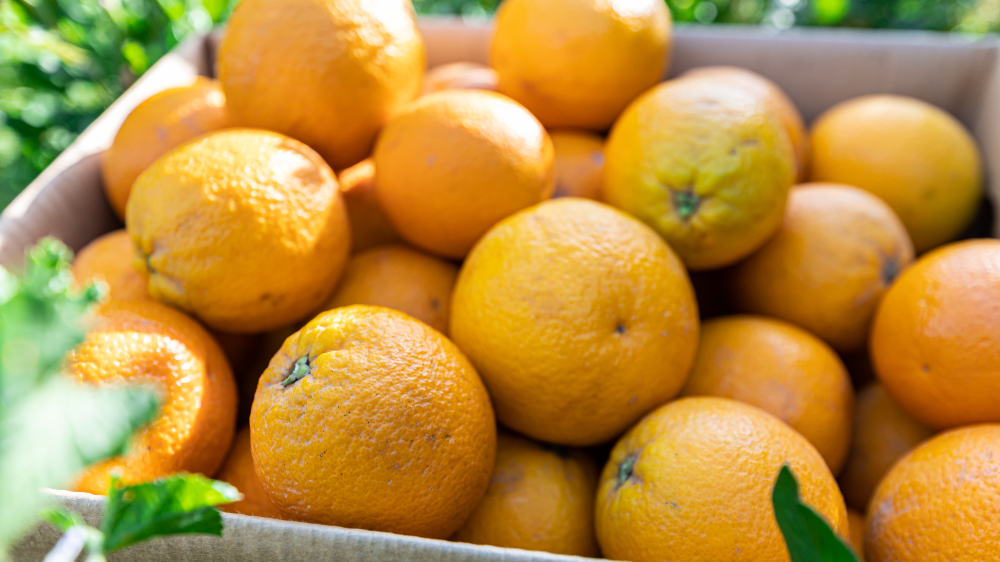
- Navelina: This variety is one of the first Navels to ripen in the season, generally available from November. Navelinas are recognisable by their small “navel” (or “bellybutton”) and are known for their sweetness, low acidity and juiciness. They are usually ready to eat between December and January.
- Navel de Foyos: They are juicy and have a good balance between sweetness and acidity. Their skin is thick and easy to peel, and they have the characteristic “navel” of Navel oranges. The harvesting season for the Foyos Navel usually starts in November and lasts until January.
- Fukumoto: This is also an early navel variety, known for its small to medium size and bright orange colour. It has a predominantly sweet taste and juicy texture, with a thin skin that makes it easy to peel. The harvest season for Fukumoto is usually from October to December.
- Navel Powell: Distinguished by its large size and slightly sweeter taste. Its skin is somewhat thicker than other Navel varieties, which helps to prolong its shelf life. The harvesting season for the Navel Powell is generally from February to April.
- Washington Navel: This is perhaps the best known and most widely cultivated variety of navel orange. It is characterised by its large size, juiciness and balanced sweetness and acidity. Its skin is thick and easy to peel, and it has a prominent “navel”. Its harvesting season starts in November and can extend until March.
- Navel Lane Late: A late variety of navel oranges, the Navel Late is harvested from spring to early summer. These oranges are large, juicy and have a balanced flavour, slightly sweeter than Navel oranges. They are ideal for eating fresh and keep their quality for longer. Their season is between March and April.
- Salustiana: Known for its high juice content and sweet taste, the Salustiana has a thin skin and is easy to peel. This variety is less acidic than other oranges and has a harvest season from mid-winter to spring, from approximately January to March.
- Valencia Midnight: A variant of the Valencia orange, the Valencia Midnight ripens later in the season, offering a rich, sweet juice, ideal for orange juice production. Its harvesting season runs from April to May.
- Valencia Late: This is another late variety of the well-known Valencia orange and stands out for its large size. Its harvesting season runs from April to July, which makes it one of the last oranges available on the market each season.
- Tarocco: One of the most popular varieties of blood oranges. The Tarocco is prized for its distinctive reddish flesh and sweet flavour profile with hints of berries. It is rich in antioxidants, especially anthocyanins, which give it its red colour. Its harvesting season is from January to May.
- Moro: Another outstanding variety of blood orange, famous for its intense red colour both in the flesh and in the skin, it is highly valued in gourmet cuisine. Its flavour is similar to tarocco, with a light touch of acidity. This variety is known for its high content of anthocyanins, the pigments that give it its characteristic colour and antioxidants. The harvesting season for the Moro covers the months of January and February each year.
Mandarins (Citrus reticulata)
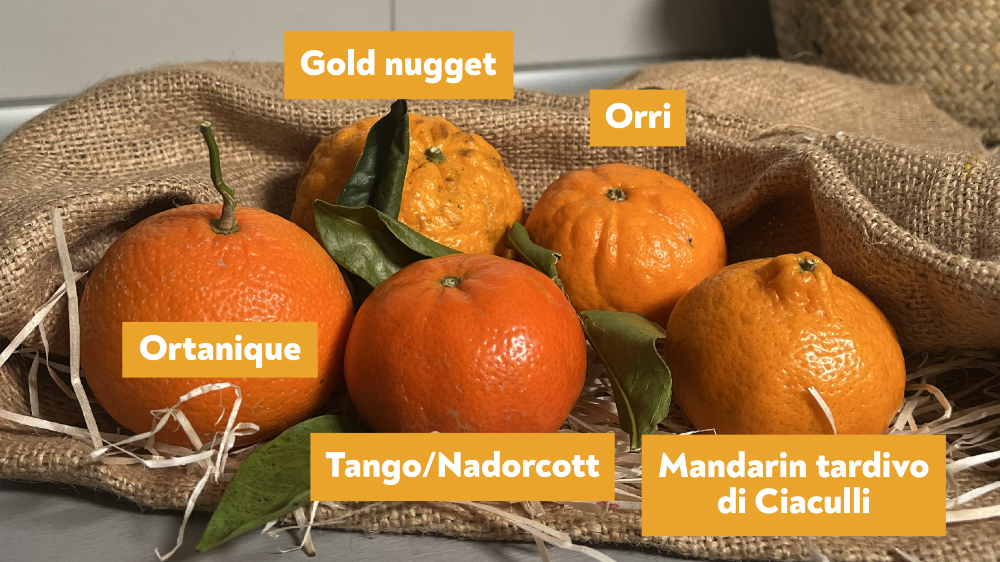
- Gold Nugget: The Gold Nugget mandarin, named for its rough skin – which gives it that imperfect look we like so much – and golden colour, is a variety appreciated for its sweetness and juiciness, with a touch of acidity. The skin of the Gold Nugget is a little thick, but it is still easy to peel. Its harvesting season is late, usually starting in March and can last until the end of May.
- Satsuma: Originally from Japan, the Satsuma mandarin is a seedless variety, very sweet and juicy, with a higher level of acidity than other mandarins and clementines. Its greenish skin is slightly thicker but easy to peel. The harvesting season of Satsuma is early, starting in autumn (approximately October to December) and being one of the first citrus fruits to reach the market each year.
- Tango: The Tango mandarin is a very popular and high quality variety from California. It is a seedless mandarin with an excellent flavour, which stands out for its intense sweetness. The skin is thin and smooth, bright orange and easy to peel. Its season starts in January and lasts until April.
- Nardocot: This variety, originally from Morocco, is characterised by its medium size and thin, easy to peel skin. The Nadorcott has the advantage of keeping well on the tree, which makes it possible to extend its harvesting season. It is also resistant to alternation, which means that it produces a good crop year after year. Like the Tango variety, it is harvested between January and April.
- Clemenvilla: Also known as Nova, it is characterised by its excellent juice quality and ease of peeling. Clemenvillas are larger than common clementines and have a slightly elongated shape. Its harvesting season is from mid-winter to early spring, approximately from December to March.
- Orogros: It is medium/large in size, with a skin that varies from yellow to orange. Its taste is a balanced mixture of sweetness and acidity. The skin is somewhat thicker than that of an ordinary mandarin, but still easy to peel. The harvesting season for Orogros is usually from January to March.
- Tardivo di Ciaculli: Originating from Sicily, Italy, this late variety is known for its exceptionally sweet taste and intense aroma. Tardivo di Ciaculli has a thin skin and a slightly flattened shape, with a later harvesting season than other mandarins, usually from late February to April.
- Ortanique: The ortanique variety comes from Jamaica, its name indicates “OR” (orange) orange, “TAN” (tangerine) mandarin and “IQUE” (unique), which tells us that it is a hybrid between mandarin and orange. They are medium to large in size, with a somewhat flattened shape, and have a high juice content of an intense orange colour. They are in season between February and March.
- Orri: The Orri mandarin is a relatively new and very high quality variety originating from Israel. It is distinguished by its exceptionally sweet taste and low level of acidity, which makes it one of the most appetising varieties on the market. The Orri has a thin, shiny skin, is easy to peel, and contains few or no seeds. The harvesting season for the Orri is in March.
Clementines (Citrus x clementina)
Clementines, often considered as a type of mandarin, tend to be somewhat sweeter, thinner-skinned and a little smaller than mandarins.
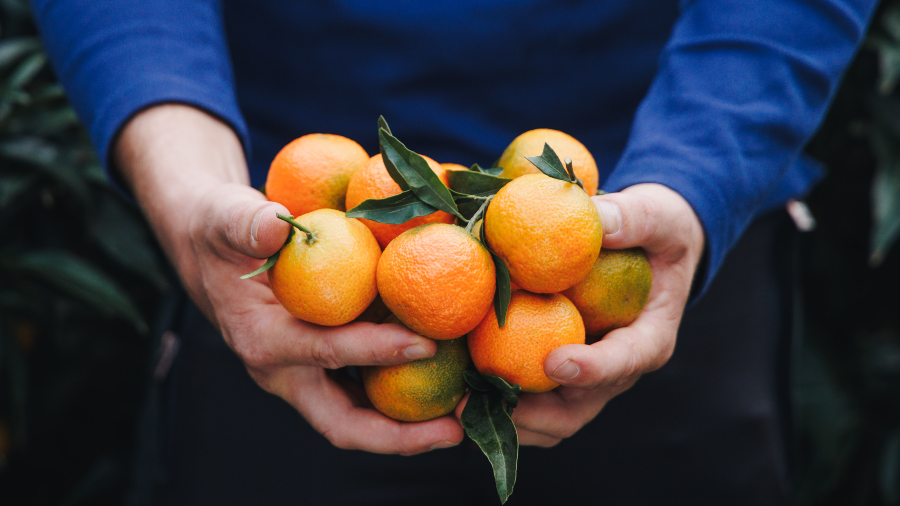
- Clemenules: These clementines have a strong sweet taste, which makes them particularly appreciated for direct consumption. Their skin is thin and easy to peel. In terms of size, they tend to be larger than common clementines. The harvesting season for Clemenules lasts from November to the end of December.
- Common Clementine: This variety is the most traditional and well-known of the clementines. It is characterised by its small to medium size, its bright orange skin and its ease of peeling. The common clementine has a perfect balance between sweetness and acidity, and is ideal both for fresh consumption and for juicing. Its harvesting season generally runs from November to January.
- Tangold: Also known as Seedless Tango, it is a recently developed seedless variety. It stands out for its intense orange colour, both in the skin and in the pulp. Its flavour is sweet, with a juicy and firm texture. The skin is easy to peel and its size is medium. The harvesting season for Tangold is usually from late winter to early spring, approximately from February to April.
- Caffin: An early variety, known for its small size and slightly elongated shape and offering a good balance between sweetness and acidity. Its harvest season is early, starting in October and extending until December.
- Oronules: The Oronules clementine is one of the first to be marketed, as it is one of the earliest to reach its optimum point of consumption. It is small, of an attractive reddish orange colour and not too acidic. It has a very thin skin, which makes it easy to peel. Its season runs from October to the end of November.
- Corsica or “Fine de Corse”: The Corsica clementine, originating from the island of Corsica in France, is a variety highly appreciated for its exceptional quality. It is characterised by its intensely sweet taste. It has a thin skin and a good quantity of juice. Corsicas are highly valued in European markets and their harvesting season and market availability usually starts around November and can extend until the end of December.
Lemons (Citrus limon)
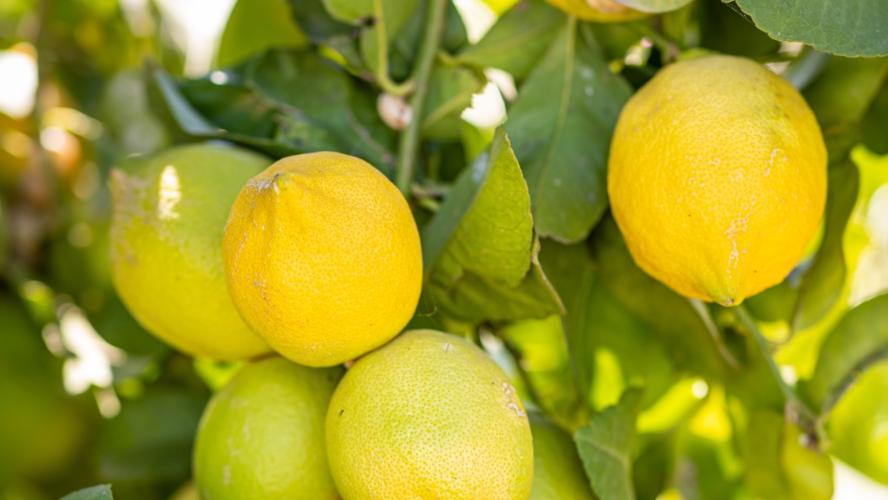
- Verna: This lemon variety is typical of Spain, with a late production cycle. It has a large size, a thick skin and is very juicy. It is less acidic than other varieties and is widely used for juice production. It is mainly harvested during spring and summer, which means that its availability is highest between the months of April and August.
- Fino or Primofiori: Also known as common or mesero lemon, it is one of the main varieties cultivated in the world. It is characterised by its thin skin and high juice content, with a perfect balance between acidity and sweetness. It is generally harvested from autumn to early spring, with peak availability between October and March.
- Femminello: originally from Italy, it is one of the most valued and widespread varieties in the Mediterranean region. It is noted for its high essential oil content in the peel, which makes it ideal for the production of limoncello and other flavoured products. This lemon has a classically tart flavour, with a thin skin and a slightly elongated shape. Its season extends throughout most of the year.
Grapefruit (Citrus paradisi)
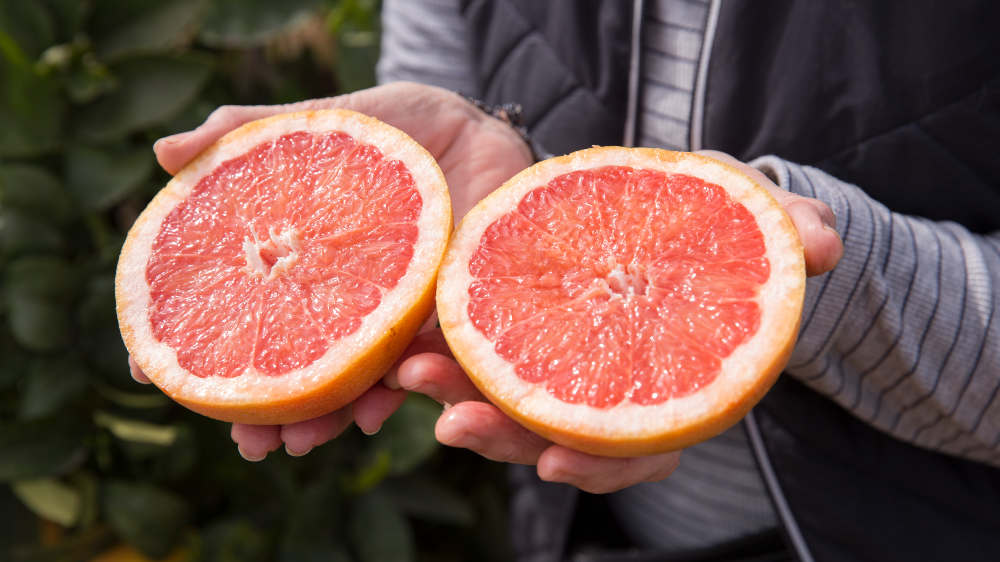
- Rio Red: Native to Texas, this grapefruit is known for its sweet and slightly tart flavour. The harvest season for the Rio Red is from late autumn to spring, making it one of the most sought after grapefruits during this period.
- Star Ruby: The Star Ruby has the reddest flesh of all grapefruit varieties. It is known for its juiciness and sweetness, and has a smaller amount of seeds. Its harvest season is similar to that of the Ruby Red and Rio Red varieties.
Other citrus species and varieties that you can find on CrowdFarming
Lime (Citrus aurantiifolia)
Known for their less acidic and more floral flavour, limes are smaller and green. They are often used in drinks and cocktails, as well as in recipes that call for a mild citrus twist. Generally the best time of year to find fresh limes would be from approximately June to September. You can find it by clicking here.
Buddha’s hand (Citrus medica var. sarcodactylis)
This fruit is very striking because of its unusual finger-like shape. It has no juice or pulp, but its skin is very aromatic and is mainly used for perfuming and as decoration in dishes and drinks. It is usually available in autumn and winter, from October to February. You can find it by clicking here.
Yuzu (Citrus junos)
Originally from Asia, yuzu is very aromatic and less acidic than traditional lemons. Its flavour is a complex mixture of lemon, mandarin and grapefruit. It is widely used in Japanese cuisine, both its juice and peel. It is mainly in season between autumn and early winter. It is harvested from late winter to early summer, from February to June. You can find it by clicking here.
Lemon Caviar or “Fingerlime” (Citrus australasica)
This Australian variety is known for its small vesicles on the inside, which look like caviar. These “pearls” burst in the mouth, releasing a sour and refreshing taste. It is a popular ingredient in haute cuisine. It is usually available in the warmer months of the year, which could be from spring until the end of summer, approximately from April to September. You can find it by clicking here.
Kumquat (Fortunella spp.)
The kumquat is a small, oval fruit, which is eaten whole, including the skin, which is sweet, while the pulp is sour. It is popular in jams, compotes and as candied fruit. Its season starts in winter and lasts until early spring, from November or December to March or April. You can find it by clicking here.
Lemonquat (Citrus × floridana)
A hybrid between kumquat and lemon, it has the size of a kumquat but with the characteristic shape and taste of a lemon. It can be eaten whole and is ideal for jams or desserts. Its availability is similar to that of the kumquat, mainly in winter and early spring, approximately from November to April. You can find it by clicking here.
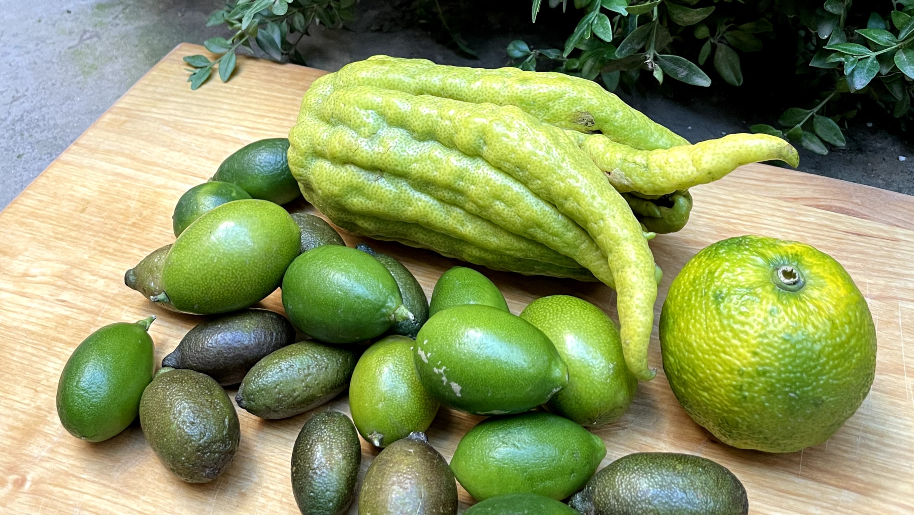




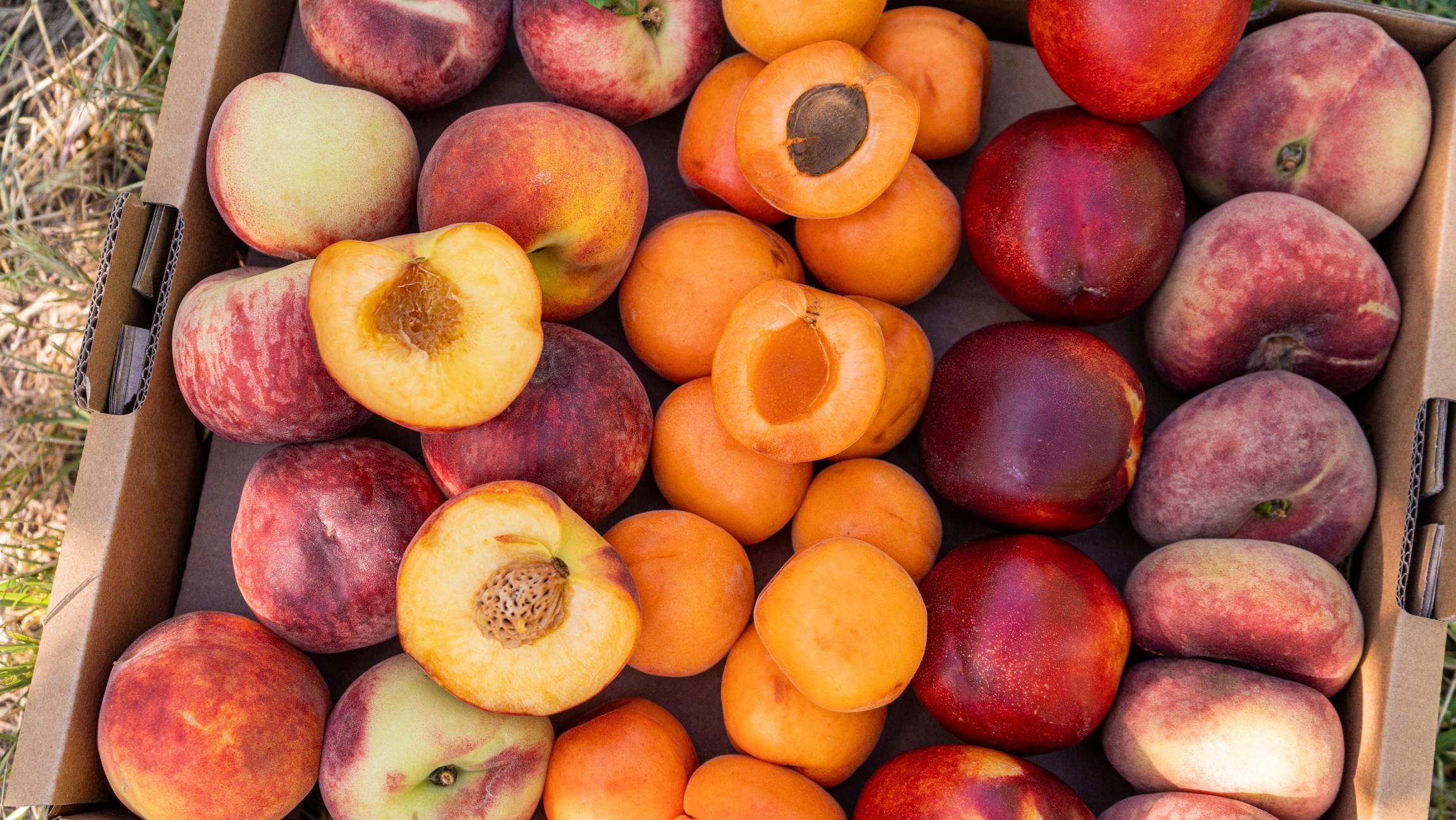
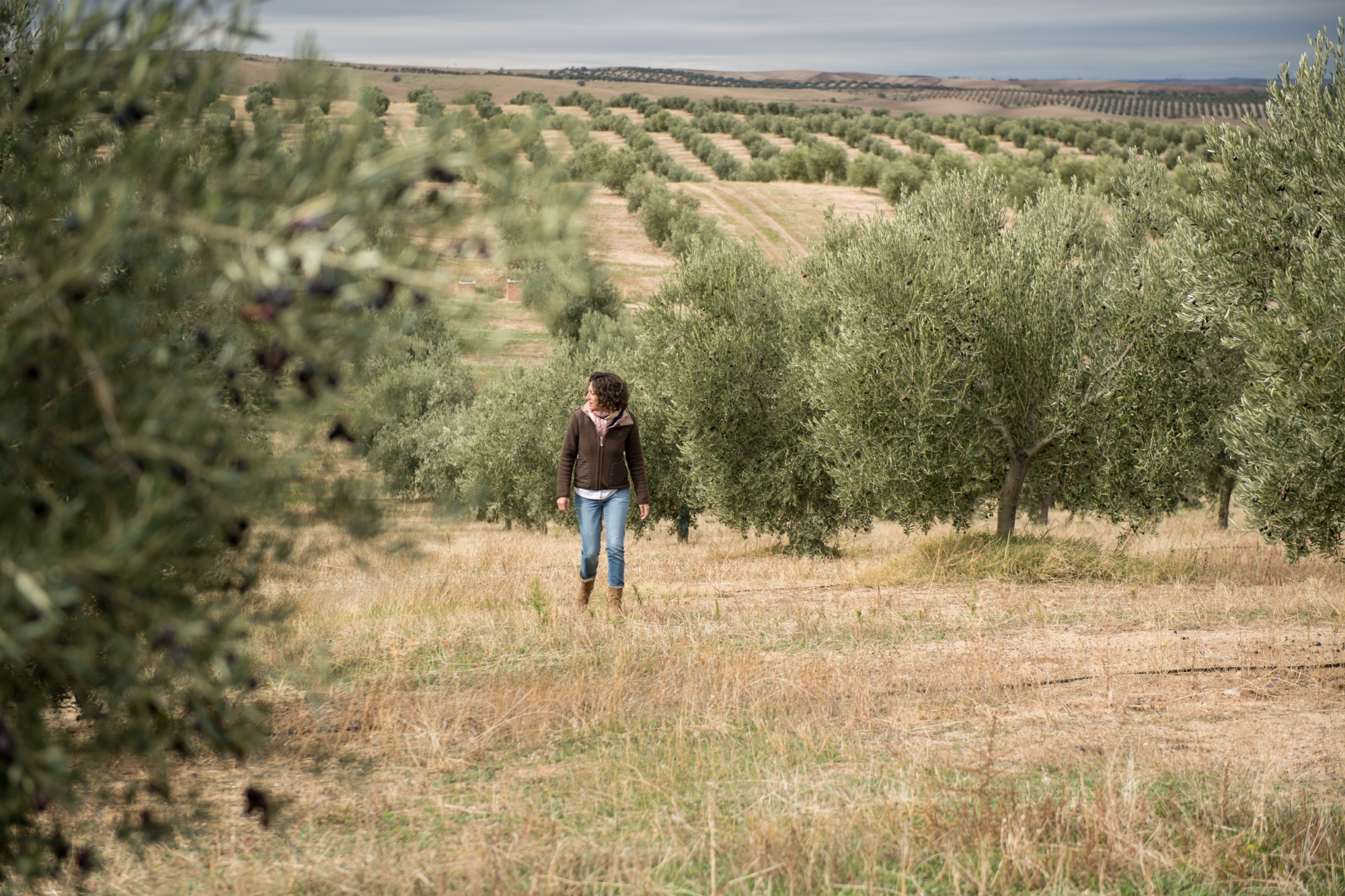

Comments
Please note that we will only respond to comments related to this blog post.